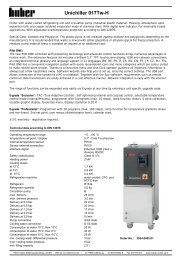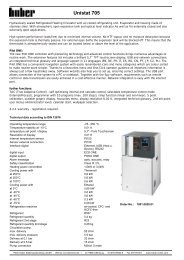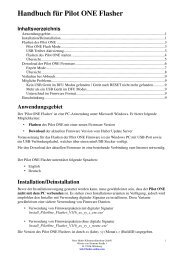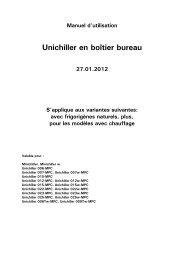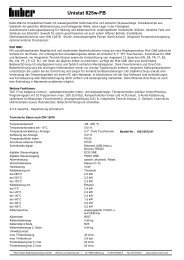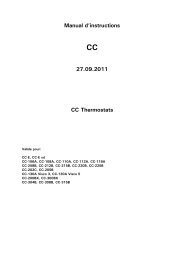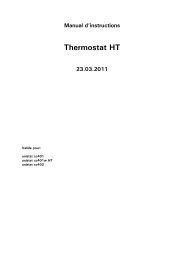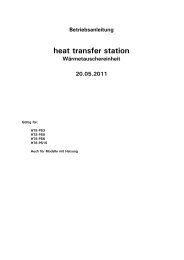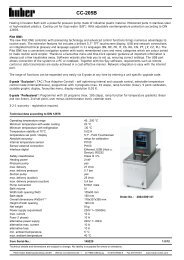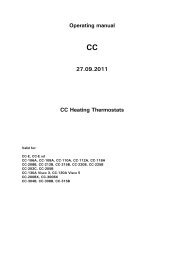Unichiller in Desktop Housing - HUBER
Unichiller in Desktop Housing - HUBER
Unichiller in Desktop Housing - HUBER
You also want an ePaper? Increase the reach of your titles
YUMPU automatically turns print PDFs into web optimized ePapers that Google loves.
Data Communication<br />
Transmission format:<br />
Baud rate 9600<br />
Process asynchronous<br />
Star bit 1<br />
Data bits 8<br />
Parity none<br />
Stop bit 1<br />
Handshake no<br />
Parameters are programmed and can not be changed!<br />
Time behaviour (tim<strong>in</strong>g)<br />
The software protocols shall have to be structured <strong>in</strong> such a way that very simple<br />
tim<strong>in</strong>g rules can be applied:<br />
The data flow with<strong>in</strong> a command should not be <strong>in</strong>terrupted. Pauses of more than 100<br />
ms between the characters of a command will cause the receiver to abort the command<br />
<strong>in</strong> the process of reception. The protocols have been set up <strong>in</strong> such a way that an<br />
„echo“ can always be received. If the echo has been received, the next command can<br />
be transmitted immediately.<br />
The typical response time is below 300 ms.<br />
If no echo is used, it is recommended to wait for 1 s between two commands.<br />
The LAI command group<br />
A number of bus-compatible commands are available under the protocol designation of<br />
LAI. The „General guidel<strong>in</strong>es“ of the software protocols are applicable.<br />
In addition, there are the follow<strong>in</strong>g special features:<br />
LAI command structure<br />
A LAI command is structured as follows:<br />
„[mssilld...dpp\r„.<br />
with:<br />
[ start character 5Bh 1 byte<br />
m transmitter identifier M (4Dh) for master<br />
or S (53h) for slave 1 byte<br />
ss slave address 01 2 bytes<br />
i identifier of the data group 1 byte<br />
ll length of the data field 2 bytes<br />
d...d data group 0…50 bytes<br />
pp check sum 2 bytes<br />
\r rogue <strong>in</strong>dicator CR (0Dh) 1 byte<br />
The transmitter identifier <strong>in</strong>dicates the direction of the data traffic. All characters <strong>in</strong><br />
front of the check sum are referred to as data field. The data group are the characters<br />
after the seventh byte up to the check sum. The actual data are conta<strong>in</strong>ed <strong>in</strong> the data<br />
group. The significance of the data is determ<strong>in</strong>ed by the identifier and the transmitter<br />
identifier. Below the commands will be referred to accord<strong>in</strong>g to the identifier of the data<br />
group.<br />
25



